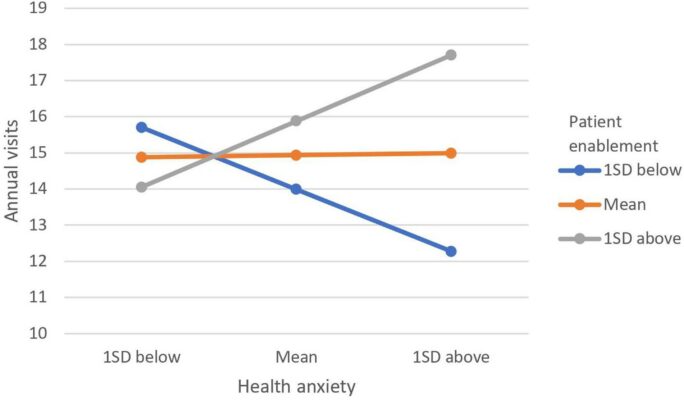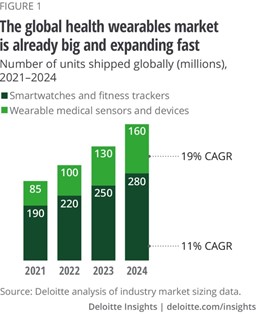How you communicate with your patients matters: to them, their health, and your practice’s bottom line. Conquer these four patient enablement challenges to ensure the best possible surgical outcomes and help your practice grow.
Across the board, physicians overestimate how well their patients can adhere to their recommendations. Ninety-three percent of physicians believe their patients can follow their treatment plan, compared to only 81% of patients who agree. Your ability to overcome the challenges associated with patient enablement can significantly impact your surgical patients’ ability to follow through with their care plan, impacting their physical and mental health outcomes.
Key Takeaways
- Patient enablement is a tool to empower patients to participate in their healthcare plan.
- Poor communication is one of the most significant barriers to good patient enablement.
- Building trust with your patients is essential to facilitate good patient enablement.
- Stigma and fear are common but surmountable obstacles during the surgical journey.
- Poor technology implementation can also hinder patient enablement, whereas its thoughtful use can be a boon.
Why Patient Enablement Is Critical
Patient enablement is one of the most powerful tools clinicians have. A fully enabled surgical patient is capable and confident in their understanding of their illness, decision for treatment, and ability to complete their preoperative and postoperative care plan. Enablement improves health outcomes and minimizes the severity of complications. It also sets patient expectations accurately, resulting in better patient satisfaction and the ability to cope in the long term.
Patient enablement consists of:
- Empowering patients to make decisions about their healthcare
- Communicating clearly with patients throughout their surgical journey
- Providing education and information in an accessible way
- Equipping patients with the tools and resources to become active participants in their care
- Encouraging self-care that’s integrated into the patient’s daily life
- Reducing or eliminating anxieties and stigmas that can act as roadblocks for patients
By communicating clearly and giving them the right information at the right time, you engage your patients without overwhelming them so that they can become effective partners in their health care plan. But it’s important to understand the most common challenges that hinder patient enablement.
4 Factors that Hinder Patient Enablement for Surgery
As with anything in medicine, patient enablement is not without its challenges. From poor communication to lack of trust, a range of factors can hinder patient enablement. Your ability as a surgeon to conquer these challenges can make all the difference to your patients and practice.
1. Communication Barriers
Effective communication is at the heart of every patient-surgeon interaction. So it should come as no surprise that communication barriers are one of the major factors that can hinder patient enablement.
To enable your patients, it’s important to invest the time and resources necessary to provide them with a full understanding of their condition and surgical options. Understand when and how your patients learn best, whether through more traditional modes of education like in-person seminars or online options like a patient portal or podcasts. The more format options you can provide your patients, the more convenient you make the learning process and the more likely they will absorb your content. Providing the right information at the right time is half the battle of patient enablement.
Arguably, even more important is listening to your patients. Their questions are an effective guide, showing you what they have understood and still feel in the dark about. Always encourage and allow plenty of time for questions during patient communication to ensure they feel fully heard, supported, and enabled.
2. Lacking Patient-Surgeon Trust and Empathy
Empathy and trust are fundamental to building a strong patient-surgeon relationship that can lead to good patient enablement. If your patients do not trust you, your education will be ineffective, and it will be difficult or even impossible to enable them. That’s why earning your patients’ trust is one of the most effective things you can do to ensure they get the best possible care, and showing empathy is the best way to earn it. Empathy demonstrates to your patients that you understand their struggles and are on their team, encouraging them to work with you in pursuit of good health.
3. Stigma and Fear
Stigmas, fears, and anxieties can stand in the way of patient enablement and act as some of the most powerful barriers to high-quality healthcare.
Social stigmas attached to surgical procedures such as bariatric surgery can deter patients and lower their levels of engagement, negatively impacting outcomes. Fear can cause patients to miss appointments and skip preoperative prep, causing costly cancellations and delays in care. And anxiety is associated with poorer health outcomes for similar reasons. Overcoming these emotional barriers can pose a significant challenge to practitioners.

While there is no one solution to these challenges, conquering the barriers above is a great place to start. Clear communication, particularly on public channels like social media, can help break down stigmas and reach patients who might otherwise avoid surgery. Likewise, building trust with your patients and answering their questions is fundamental to help alleviate any anxiety they have about their procedure.
4. Technological Barriers
The modern digital revolution has provided a wealth of technologies that can promote patient enablement for surgery, but that same technology can just as easily hinder progress. If your patient platform is clunky, difficult to navigate, or unreliable, it will frustrate your patients and make them less likely to seek the information they need. Poorly designed technology can also steal time from your clinical staff, forcing them to spend valuable hours on administration instead of interfacing directly with patients. That’s why investing in quality tech tools is so important.
You should center your patients’ needs when implementing technology in your surgical practice. Choose automated tools that deliver reminders and prompts to help keep your patients on track throughout their surgical journey. Wearable devices are another growing market that helps make your patients’ lives easier by wirelessly delivering data, rather than requiring them to spend time entering data manually and risking losing their dedication. Whichever technology you choose to implement, ensure it facilitates patient enablement rather than inhibiting it.

Leverage Effective Technology to Overcome Your Patient Enablement Challenges
Don’t let poor tech tools get in the way of effective patient enablement. Wellbe’s flexible personal automation solutions are designed to enhance your patient communication and streamline the entire surgical journey.
Contact us today to discover how Wellbe can help improve your patient enablement!


 The epitome of an entrepreneur, Mark has seen the peaks and valleys of starting, operating, and assuming the risks of a new venture. He’s come up against payroll, had a few bad hires, and even swept the floors early on. Collectively, Mark’s companies have done over $360 million in sales and raised more than $38 million in venture capital, and he has successfully bought and/or sold eight companies.
The epitome of an entrepreneur, Mark has seen the peaks and valleys of starting, operating, and assuming the risks of a new venture. He’s come up against payroll, had a few bad hires, and even swept the floors early on. Collectively, Mark’s companies have done over $360 million in sales and raised more than $38 million in venture capital, and he has successfully bought and/or sold eight companies. James believes technology, when creatively applied, can improve our life experiences. Intrigued by the amazing potential for internet and mobile technology to engage us all, James created a business model to reshape personal health management.
James believes technology, when creatively applied, can improve our life experiences. Intrigued by the amazing potential for internet and mobile technology to engage us all, James created a business model to reshape personal health management. Mike Splinter, an electrical engineer and innovator, has played a major role in driving advances in the high tech industry, with more than four decades of executive leadership experience including 12 years with Applied Materials, Inc. where he was served as chairman and CEO, and over 20 years with Intel, where he was executive vice president of sales and marketing, and executive vice president of the Technology and Manufacturing Group.
Mike Splinter, an electrical engineer and innovator, has played a major role in driving advances in the high tech industry, with more than four decades of executive leadership experience including 12 years with Applied Materials, Inc. where he was served as chairman and CEO, and over 20 years with Intel, where he was executive vice president of sales and marketing, and executive vice president of the Technology and Manufacturing Group. Mr. Baldwin was most recently Chairman and CEO of Baxa Corporation, a leader in devices, systems, and software for the handling, packaging, and tracking of fluid medications in a critical care setting. Under his leadership from 1997 until its sale to Baxter Corporation in 2011, the company sales grew from $25 million to over $170 million. As CEO, he led the eight-member board of directors and led a minority recap resulting in Goldman Sach’s private equity group owning 27% of the company. He was also an early investor and lead director in Pharmacy OneSource, an innovative software-as-a-service business that had a successful exit in 2010.
Mr. Baldwin was most recently Chairman and CEO of Baxa Corporation, a leader in devices, systems, and software for the handling, packaging, and tracking of fluid medications in a critical care setting. Under his leadership from 1997 until its sale to Baxter Corporation in 2011, the company sales grew from $25 million to over $170 million. As CEO, he led the eight-member board of directors and led a minority recap resulting in Goldman Sach’s private equity group owning 27% of the company. He was also an early investor and lead director in Pharmacy OneSource, an innovative software-as-a-service business that had a successful exit in 2010.